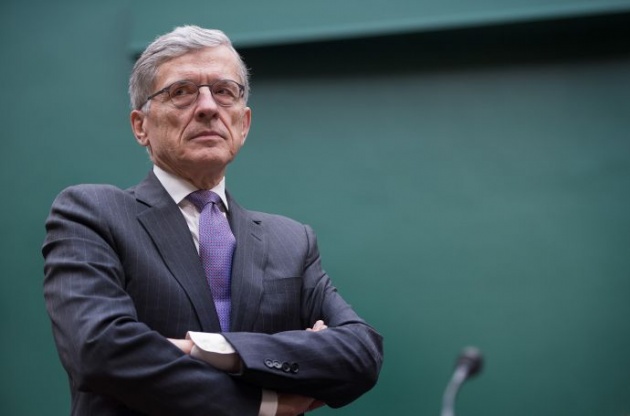
Today, the Federal Communications Commission, by a vote of three to two, enacted its strongest-ever rules on net neutrality, preserving an open Internet by prohibiting broadband providers from blocking or slowing content that flows across their pipes. It is a substantial achievement for the Obama Administration and the F.C.C. chairman Tom Wheeler, and also for the many groups that fought hard for the outcome. But it also is a moment to reflect back on the process over the last year that led here, and figure out why what so many people thought they knew turned out to be wrong.
Let’s begin with the most obvious incorrect prediction, namely that passage of a strong rule (a Title II rule in telecom jargon) would be politically impossible. A year ago, Kevin Werbach, a thoughtful and prominent analyst, predicted that “the political and marketplace costs” of strong net-neutrality rules would be just “too great.” He warned, among other things, that Congress would “grind the FCC to a standstill, starve its budget, and do everything in their power to inflict permanent harm on the agency.”
Werbach’s point was echoed by political cynics who believe that federal regulatory agencies like the F.C.C. tend to become captured and obey the bidding of whoever spends the most to lobby them. Money was certainly not on the side of net neutrality. A.T. & T., Verizon, Comcast, and others opposed strong net-neutrality rules, while the richest potential allies, companies like Google and Facebook, mostly sat things out. Some of the only groups in favor of strong rules were little-known activist organizations like Fight for the Future, Demand Progress, and Free Press; a few startups like Tumblr and Kickstarter; a handful of academics dabbling in public policy; and the narrow segment of the public that actually pays attention to such things. Given that lineup, the outcome seemed about as preordained as what happened when Michael Spinks stepped into the ring with Mike Tyson.
But these predictions were wrong. Why, exactly, is subject to debate. It may have been the unexpected effectiveness of Internet-based activist groups, who protested the F.C.C. and helped convince millions of people to write and send comments about the potential rules. It may have been the White House and the personal involvement of President Obama himself. Or maybe people just misunderstood the character of the F.C.C. chairman Tom Wheeler. Whatever the explanation, the most pessimistic theories of lobbyist power clearly need be revised.
It is often the case in Washington that ideas gain the status of deep truths not because they are actually true, but only because they are repeated often enough. That was the case for another widespread idea: that enacting strong net-neutrality rules would lead to a collapse in the value of broadband providers like Comcast and Verizon. In a May letter, twenty-eight industry C.E.O.s warned of an “investment-chilling effect” that would destroy millions in market value. And, in fact, fears of such a collapse were a large part of what stopped the F.C.C. from enacting Title II rules in Obama’s first term.
Yet the moment that Tom Wheeler announced his plans for strong net-neutrality rules, on February 4th, broadband stocks jumped, and they have stayed buoyant. This has confused experts. Craig Moffett, whom I consider to be the smartest telecom analyst around, was forced to blame the market. “I think it just shows you that the market doesn’t really understand these issues,” he said.
The theory of the wisdom of crowds suggests that the markets have noticed something: the broadband industry hates net neutrality, but its existence has always had a huge and unnoticed upside. Selling broadband is a great business: Moffet has pointed out that the margins are north of ninety-seven per cent. Stated simply, a strong net-neutrality rule locks in the status quo for the most profitable part of the cable industry’s business.
Looking to the future, there’s one last thing that everyone might be wrong about. The general assumption is that the new rules will be met with fierce and protracted litigation (perhaps decades of it, warn the greatest doomsdayers). I’ve said myself that there will be litigation, and it is true that, in our times, most serious regulation is immediately challenged in court, almost as a kind of corporate reflex. Verizon and A.T. & T. have both already threatened to sue. But maybe this prediction is wrong, too.
For one thing, given the jump in stock prices, filing a lawsuit will technically be suing to invalidate rules that seem to have created billions of dollars of shareholder value for the broadband providers. For another, suing the F.C.C. tends to annoy the agency, meaning that you might count out A.T. & T. and Comcast, both of whom have pending mergers before the commission. Sprint has already said that it doesn’t mind net-neutrality regulation, and it is hard to imagine a smaller company really wanting to bother. So it probably comes down to whether Verizon or a trade group like the National Cable & Telecommunications Association thinks that it is worth the time, money, and continued uncertainty inherent in trying to knock out the new rules.
And so, barring the Republicans in Congress somehow coming up with a veto-proof majority and passing a law that reverses the regulation, the rules are here for at least the near-term. That creates a chance to test one bit of received wisdom, namely, the oft-repeated axiom that strong net-neutrality rules will deter investment in broadband infrastructure. On this we have some early data: with full knowledge that the rules were coming, bidders in late January spent a record $44.9 billion on broadcast spectrum—exactly the kind of infrastructure investment that the laws would supposedly deter. It has been a tough year for what once passed as conventional wisdom.



